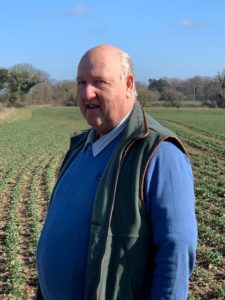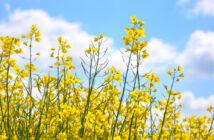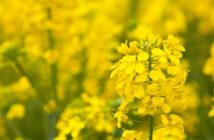Oilseed rape (OSR) growers across England are still awaiting a much needed rainfall, which threatens the United Oilseeds’ forecast that OSR acreage could increase by 30% in 2022.
Michael Wilton, BASF Real Results grower and farm manager at the Stody Estate in Norfolk, said: “I need between 25 and 50ml of rainfall before I can confidently drill OSR.”
“Moisture is the most important aspect of establishing the crop; it’s as important as all the other factors – cultivations, varietal selection, early nutrition – put together,” Mr Wilton added. “Not only do we need some moisture for seeds to chit, we need enough to keep seedlings growing.”
Growers in the north, such as BASF’s Yorkshire agronomy manager Matthew Barnes, have been able to start drilling earlier. However, fears of another dry spell still threaten grower’s confidence.
“In comparison with Michael, we’ve had a splash more rain to end a dry July,” noted Mr Barnes. “It was drizzily on and off all last week, preventing the combines from running. But a dry spell is set to come in and any OSR that’s been drilled could be vulnerable. Cabbage root fly and clubroot have all increased recently so it’s a watch out for drilling this early even with sufficient moisture.
“While cabbage stem flea beetle (CSFB) pressure has lessened recently, pigeons are still a real issue and can take a good crop back to bare stems in no time. Getting a well-established even crop going into the winter is key as backward crops have landing spaces and are targeted first,” said Mr Barnes.
Mr Wilton said that he would usually receive 400ml of rainfall by August, but is currently 160ml short: “At this moment in time, I don’t know where that moisture is coming from. If we’ve not had any significant rainfall by the end of August, I won’t be planting any OSR and that would be a disaster.”
“I’ve been asked whether I’d consider irrigation to get the OSR established. It’s always been a resounding ‘no’ but I’m starting to wonder whether I ought to contemplate it. If I’d already cultivated, drilled and applied my pre-emergence herbicide, perhaps it’s not such a crazy idea to protect the investment after all – it would still be expensive.”

Michael Wilton, farm manager at the Stody Estate in Norfolk
“This year, however, despite having had 100 million gallons of water from the reservoirs and bole holes, it’s likely that I’ll have run out of water by the time any OSR is in the ground.”
And, Mr Wilton says, moisture is more important than the drilling date.
This year, Mr Wilton is growing DK Expansion, LG Ambassador and V367OL (HOLL) OSR varieties. He said that he looks for good genetics, strong autumn vigour and larger seeds.
“I won’t accept seed with less than a 5g thousand seed weight. Quite simply we’ve found that the bigger the seed, the bigger the cotyledons and the more energy the young plants have, making them more resilient to CSFB damage.”
Newer varieties are performing very well in breeder and AHDB’s recommended list trials, for beetle and weed resilience, he concludes.




